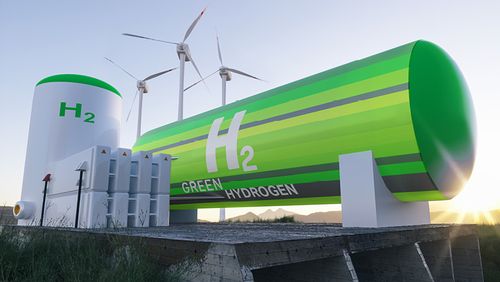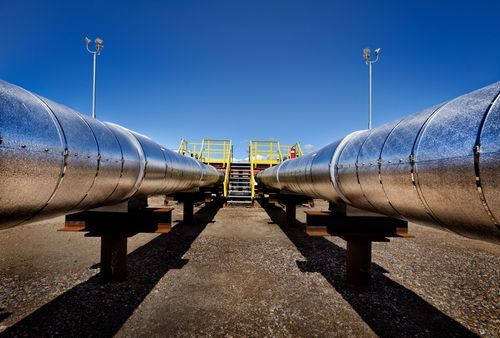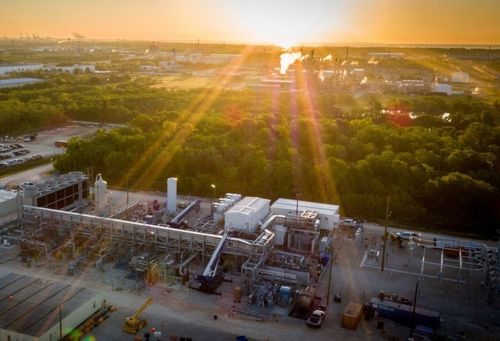An updated Q&A document from the European Commission clarifies several provisions related to the qualification of renewable fuels of non-biological origin (RFNBO) and recycled carbon fuels, in answer to questions raised by fuel producers and certifiers following the adoption of the EU’s delegated acts.
The implementation document released yesterday adds language regarding the use of intermediaries in PPAs, allowing for such parties to represent electricity producers in the delivery of electricity for fuel production. A previous version of the document had left open the possibility that fuels producers would have to contract directly with the electricity producers in order to comply with the RFNBO standards, a particularly burdensome concept where utilities have mandated grid ownership.
“Intermediaries referred to in the RFNBO delegated act may be involved by various means and for various purposes, including as a contracting party,” the document reads. “For example, intermediaries can represent the electricity producers, but it is important that a direct relationship between the electricity producer and the hydrogen producer is maintained.”
The document adds that guarantees of origins (GOs) must be compliant with rules set out elsewhere in the Q&A document as well as in the RFNBO delegated act and Article 19 of RED.
“The GOs for the PPA need to […] carry the same attributes as the physical installation producing the electricity. This includes e.g. the location of the installation, the age of the installation, and the time of the production.”
The new Q&A document also clarifies the definition of a ‘bidding zone’ for purposes of regional compliance, a concept that could result in a narrower definition than the balancing authority regions defined under US rules, due to nodal and zonal power pricing structures in the US system.
“Certifiers should assess whether at the location of the electrolyser, market regulations applied are similar to the rules set out for bidding zones in Regulation (EU) 2019/943,” the Q&A document reads. “In this context ‘similar’ means that there are rules requiring establishing hourly prices for electricity in a geographical area. If such rules are in place, the geographical area for which the prices are established should be considered as a bidding zone for the purpose of the implementation of the methodology.”
If geographical pricing rules are not in place, the document continues, “certifiers should assess whether the electricity network in the country of production is integrated or whether there are several separated networks. If there are several networks, each network should be considered as a bidding zone for the purpose of the implementation of the methodology.”
Meanwhile, “if the electricity network of the country is integrated and there are no geographically differentiated electricity prices, the whole country may be considered as one bidding zone for the purpose of the implementation of the RFNBO delegated act.”
Furthermore, the document includes an annex on the carbon intensity measurement for use of co-processing to produce synthetic fuels:The GHG methodology sets out a specific rule for calculating the emission intensity of RFNBOs stemming from a process where co-processing is applied. It allows to distinguish in the calculation of the greenhouse gas emissions intensity on a proportional basis of the energetic value of inputs between: (1) the part of the process that is based on the conventional input and (2) the part of the process that is based on renewable fuels of non-biological origin and recycled carbon fuels assuming that the process parts are otherwise identical.
If for instance a process uses H2, CO, CO2 as well as other energy inputs to produce synthetic fuels and the producer intends to replace 20% of the H2 with H2 qualifying as RFNBO, it would be possible to determine the emission intensity of the produced synthetic fuels assuming a virtual process which uses only 20% of all inputs mentioned above (20% of each input). In this example, all hydrogen qualifying as RFNBO (which is 20% of the total H2 input) would be used in the virtual process, and the other 80% of the hydrogen (all non-RFNBO) would be used in the other process which uses 80% of all inputs. Such process would also yield only 20% of the output, but only the energy share of RFNBO hydrogen in the input would be considered an RFNBO. It would be possible to replace in this virtual process more than one input. Not only RFNBOs but also RCF, biomass, renewable electricity, renewable heat and CO2 (including biogenic) could be used for this purpose. While the use of RCF and biomass would not add to the share of RFNBOs in the output, they could reduce the emission intensity of the output as the entire output of the virtual process would have the same emission intensity. “









